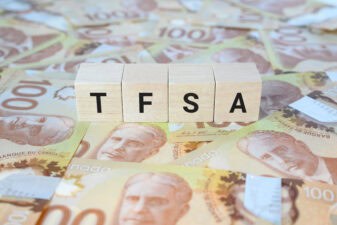A Tax-Free Savings Account (TFSA) is a great tool to grow your savings over time. However, investors need to be careful when making contributions to a TFSA, because it can be easy to make a mistake and run into problems, even if you haven’t maxed out your portfolio. There’s no hand-holding from the government, and it’s up to individual investors to ensure that they haven’t overcontributed. Here are two ways that you can run into trouble and overcontribute to your TFSA without even noticing it.
Contributing too quickly after a withdrawal
One of the biggest mistakes is undoubtedly the lag that happens between the time you withdraw money from your TFSA and when the contribution room gets replenished in your account. While you may expect that since you’ve withdrawn funds from your account that you’re free to re-invest them later on in the year, that’s not necessarily the case. The problem is that those funds don’t become available until the following year, and so re-contributing the same amount could lead to an overcontribution if you don’t have room.
For example, suppose your cumulative limit for your TFSA is $69,500, which would be the case if you’ve never invested in it and been eligible to contribute every year. If you contribute the maximum amount today and then withdraw the entire amount tomorrow, you’re not able to contribute any more funds until the next year, even though the balance in your TFSA would be zero.
The problem is that the $69,500 that was withdrawn will free up contribution room, but it won’t be until the beginning of the next calendar year. That means contributing any additional amount during the current year would result in an overcontribution and penalties.
Not calculating U.S. contributions at the correct rate
You can contribute to a U.S. dollar TFSA, and if you do so using U.S. funds, you need to be careful about which exchange rate is being used. Your bank or financial institution should show you the rate and Canadian dollar equivalent that you contributed into your TFSA. When in doubt, it’s best to go to the source, as that’s what the financial institution will report to the government as to what you have contributed. Making an error in the calculation can be costly, especially if you’re making a large contribution or are near your limit.
Bottom line
It’s important to be careful when using a TFSA to ensure that you’re not running afoul with the Canada Revenue Agency. An easy way to avoid doing so is by deploying a simple strategy like investing in an ETF such as BMO Canadian Dividend ETF (TSX:ZDV). It’s a good option, as it’ll provide your TFSA with dividend income and the ability to benefit from the share appreciation in some of the TSX’s top dividend stocks.
With a yield of more than 4%, the fund provides a good dividend to go along with its overall returns. In 2019, the ETF rose by 17%, which was slightly below the TSX’s performance of 19%.
With many blue-chip dividend stocks included in the ETF that come from financial services, utilities, energy, industrials, and many other sectors, the fund can offer a broad mix of stocks in one simple investment. And with the stock’s averaging a price-to-earnings multiple of less than 15 and a price-to-book multiple of 1.7, you’re not paying a big premium to own these stocks, either.
Investing in an ETF can be a simple way to invest in a TFSA that minimizes the number of investments to keep track and can help you avoid making too many transactions along the way, keeping the complexity low and minimizing the chance that you overcontribute.
 Claim Membership Credit
Claim Membership Credit







